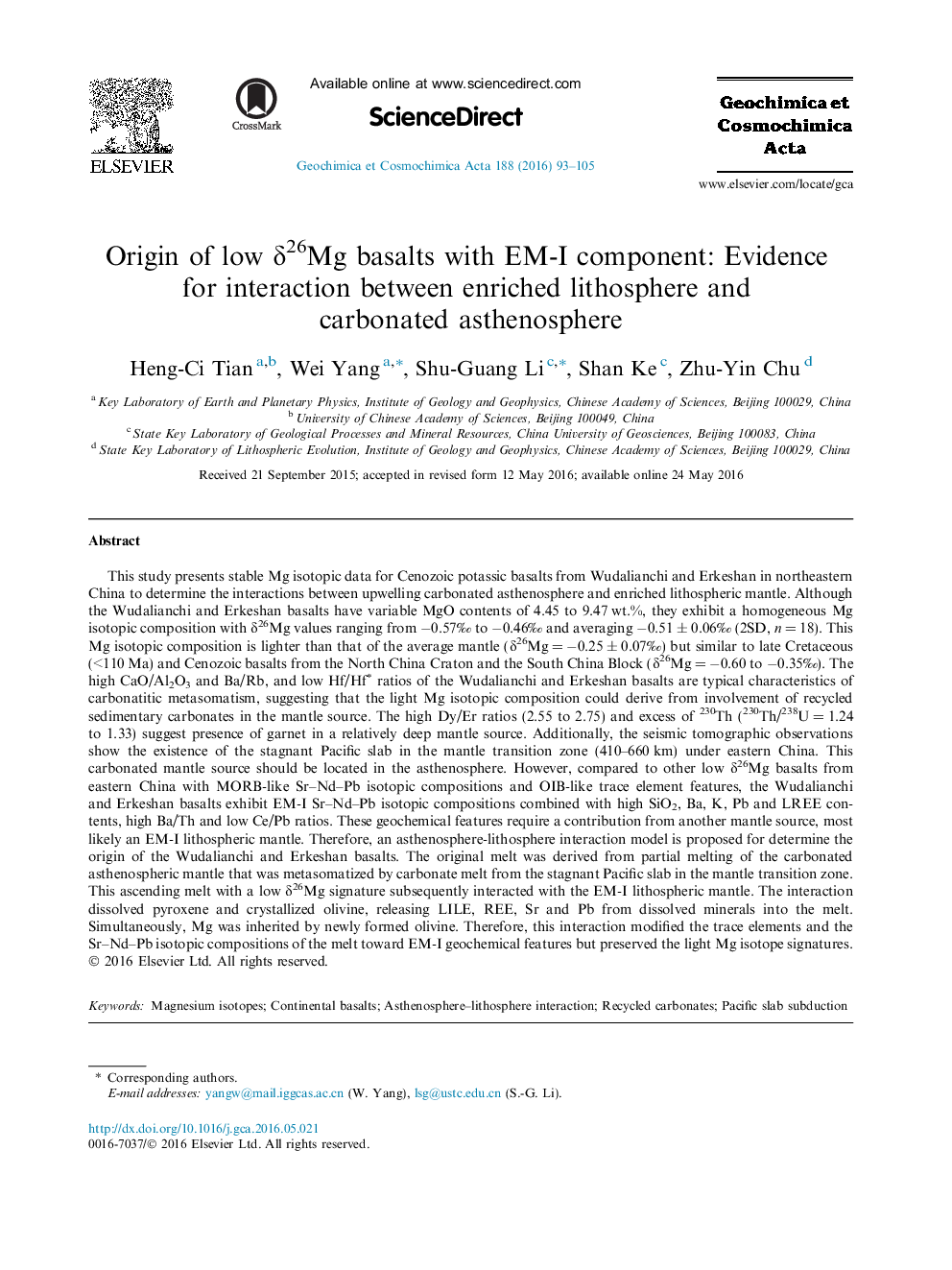| کد مقاله | کد نشریه | سال انتشار | مقاله انگلیسی | نسخه تمام متن |
|---|---|---|---|---|
| 4701763 | 1637969 | 2016 | 13 صفحه PDF | دانلود رایگان |

This study presents stable Mg isotopic data for Cenozoic potassic basalts from Wudalianchi and Erkeshan in northeastern China to determine the interactions between upwelling carbonated asthenosphere and enriched lithospheric mantle. Although the Wudalianchi and Erkeshan basalts have variable MgO contents of 4.45 to 9.47 wt.%, they exhibit a homogeneous Mg isotopic composition with δ26Mg values ranging from −0.57‰ to −0.46‰ and averaging −0.51 ± 0.06‰ (2SD, n = 18). This Mg isotopic composition is lighter than that of the average mantle (δ26Mg = −0.25 ± 0.07‰) but similar to late Cretaceous (<110 Ma) and Cenozoic basalts from the North China Craton and the South China Block (δ26Mg = −0.60 to −0.35‰). The high CaO/Al2O3 and Ba/Rb, and low Hf/Hf∗ ratios of the Wudalianchi and Erkeshan basalts are typical characteristics of carbonatitic metasomatism, suggesting that the light Mg isotopic composition could derive from involvement of recycled sedimentary carbonates in the mantle source. The high Dy/Er ratios (2.55 to 2.75) and excess of 230Th (230Th/238U = 1.24 to 1.33) suggest presence of garnet in a relatively deep mantle source. Additionally, the seismic tomographic observations show the existence of the stagnant Pacific slab in the mantle transition zone (410–660 km) under eastern China. This carbonated mantle source should be located in the asthenosphere. However, compared to other low δ26Mg basalts from eastern China with MORB-like Sr–Nd–Pb isotopic compositions and OIB-like trace element features, the Wudalianchi and Erkeshan basalts exhibit EM-I Sr–Nd–Pb isotopic compositions combined with high SiO2, Ba, K, Pb and LREE contents, high Ba/Th and low Ce/Pb ratios. These geochemical features require a contribution from another mantle source, most likely an EM-I lithospheric mantle. Therefore, an asthenosphere-lithosphere interaction model is proposed for determine the origin of the Wudalianchi and Erkeshan basalts. The original melt was derived from partial melting of the carbonated asthenospheric mantle that was metasomatized by carbonate melt from the stagnant Pacific slab in the mantle transition zone. This ascending melt with a low δ26Mg signature subsequently interacted with the EM-I lithospheric mantle. The interaction dissolved pyroxene and crystallized olivine, releasing LILE, REE, Sr and Pb from dissolved minerals into the melt. Simultaneously, Mg was inherited by newly formed olivine. Therefore, this interaction modified the trace elements and the Sr–Nd–Pb isotopic compositions of the melt toward EM-I geochemical features but preserved the light Mg isotope signatures.
Journal: Geochimica et Cosmochimica Acta - Volume 188, 1 September 2016, Pages 93–105